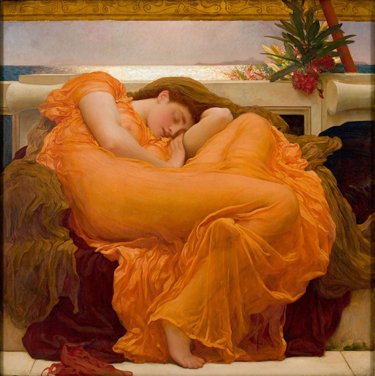The History of the Color Orange
Art, Colors, History, Orange

Frederic Leighton, 1st Baron Leighton, Flaming June, 1895, Museo de Arte de Ponce, Ponce, Puerto Rico.
The color orange has a long history that dates back centuries. The ancient Egyptians used a yellow-orange hue made from the mineral realgar in their tomb paintings. As with many minerals used to make pigments, realgar is highly toxic—it contains arsenic—and was used by the Chinese to repel snakes, in addition to being used in Chinese medicine.
Another related mineral, orpiment, was also used to make pigments. Just as toxic as realgar, it was also a highly prized trade item in Ancient Rome. Orpiment leans toward a golden yellow-orange and its resulting pigment, as well as that of realgar, was used in Medieval times in illuminated manuscripts.
Interestingly, in Europe, the color orange didn’t have a name until the 16th century. Prior to that time it was simply called yellow-red. Before the word orange came into common use in English, saffron was sometimes used to describe the deep yellow-orange color. This changed when orange trees were brought to Europe from Asia by Portuguese merchants. The color was then named after the ripe fruit, which carries through many different languages. Orange in English, naranja in Spanish, arancia in Italian, and laranja in Portuguese.
A good color for starting conversations when worn on St. Patrick’s Day.



